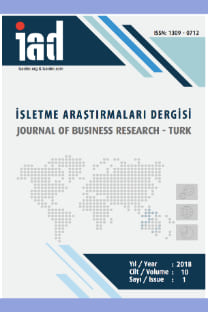Determining the Factors Affecting Liquidity Risk in Insurance Companies: Borsa İstanbul Example
Determining the Factors Affecting Liquidity Risk in Insurance Companies: Borsa İstanbul Example
___
- Baltagi, B. (2001). Econometric Analysis of Panel Data, 2nd Ed., UK: John Wiley & Sons Ltd.
- Berger, A. N., Bowman, C. H. S. (2006). The measurement of bank liquidity creation and the effect of capital. US Federal Reserve System. Available at: http://fic.wharton.upenn.edu/fic/papers/07/0702
- Bonfim, D., Kim, M. (2012). Liquidity Risk in Banking: Is There Herding. European Banking Center Discussion Paper No. 2012-024. https://doi.org/10.2139/ssrn.2163547
- Brunnermeier M. K., Krishnamurthy A., Gorton G. B. (2012). Liquidity Mismatch Measurement in Systemic Risk and Macro Modeling, NBER.
- CEIOPS (2010). Committee of European Insurance and Occupational Pensions Supervisors. 2010. “Task force report on the liquidity premium”, Working Document, CEIOPS-SEC-34/10.
- Çelik, S., Akarım, Y., Akarım, D. (2012). Likidite Riski Yönetimi: Panel Veri Analizi ile İMKB Bankacılık Sektörü Üzerine Ampirik Bir Uygulama. Eskişehir Osmangazi Üniversitesi Sosyal Bilimler Dergisi, 13(1), 1-17.
- Çelik, S., Akarım, Y.D. (2012). Likidite Riski Yönetimi: Panel Veri Analizi ile İMKB Bankacılık Sektörü Üzerine Ampirik Bir Uygulama, Eskişehir Osmangazi Üniversitesi Sosyal Bilimler Dergisi, 13(1), 1-17.
- Drehmann M., Nikolaou K. (2012). Funding liquidity risk: definition and measurement. European Central Bank.
- Drehmann, M., Nikolaou, K. (2013). Funding Liquidity Risk: Definition and Measurement, Journal of Banking & Finance, 37(7), ss. 2173–2182.
- Gaspar, M.R., Sousa, H. (2010). Liquidity risk and Solvency II, Insurance Markets and Companies: Analyses and Actuarial Computations, Volume 1, Issue 3
- Greenee, W. H. (2003). Econometric Analysis, 5th Ed., New York: Prentice Hall.
- Shen C. H., Chen Y. K. Kao L. F., Yeh C. Y. (2010). Bank Liquidity Risk and Performance. International Monetary Fund Working Paper.
- Yıldırım, B.D. (2011). Finansal Piyasa Likiditesi, Ölçümü ve Analizi Central Bank Review, 11, 11-28.
- Zengin, S., Yüksel, S. (2016). Likidite Riskini Etkileyen Faktörler: Türk Bankacılık Sektörü Üzerine Bir İnceleme., İstanbul Ticaret Üniversitesi Sosyal Bilimler Dergisi, 29, 77-95
- ISSN: 1309-0712
- Yayın Aralığı: 4
- Başlangıç: 2009
- Yayıncı: Melih Topaloğlu
Pay Getirilerinin Basıklık ve Çarpıklığının İflas ve Temerrüt Olasılıkları Üzerine Etkisi
Yetiştirme ve Kariyer Algısının Çalışan Tutkunluğuna Etkisi
Özgüven ve Kariyer Uyum Yeteneklerinin Bireysel Gelişim İnisiyatifi Üzerindeki Etkisi
Yolsuzluk Muhasebesi: GRI 205 Standardı Özelinde Normatif Bir Araştırma
Soner GÖKTEN, Pınar OKAN GÖKTEN
Şeyda Nur SEÇKİN, Mehmet TİKİCİ
Bilişim Teknolojileri - İş Uyumlamasi İçin Gerekli Örgütsel Faktörler
